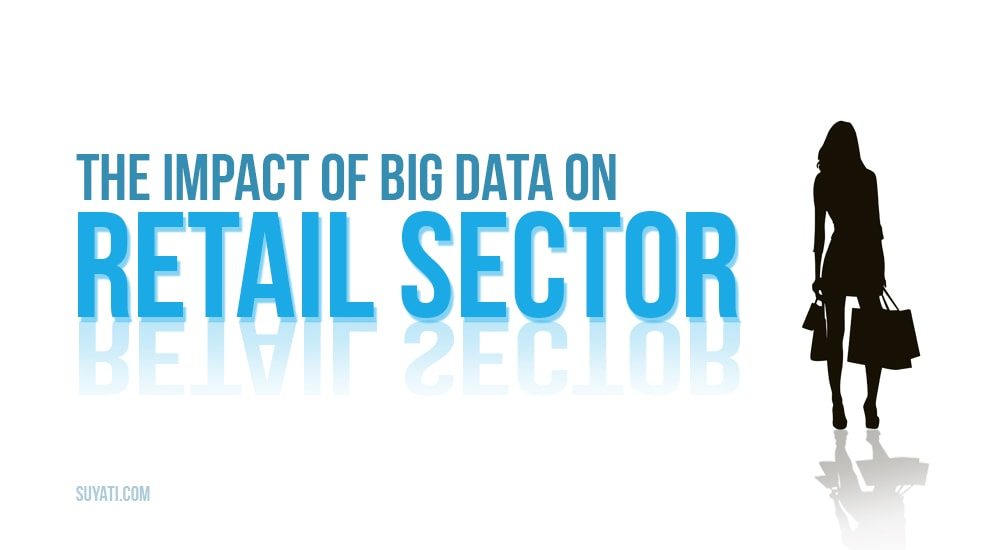
Big Data is data characterized by the three V’s of volume, velocity and variety which stand as raw material for analysis and consequent generation of insights. In the retail industry, data is generated from diverse sources ranging from supply chain to the marketing operations. The population of information is also mounted with data from social media galleries. This plethora of information can be used to extract predictions on trends, to estimate the demand for products, for perfecting the pricing of products, for creation of lead client profiles and to customize user experience in the retail sector. Data analytics has turned out to be a critical wedge in the machinery of retail sector.
Prediction of Market Trends
The landscape of world wide web can be quarried to process and predict the products which would dominate the market in the near future. This can range from children’s books to electronic appliances. The web-browsing histories and social media records are filtered through algorithms of trend-prediction to gauge the tastes of buyers. Contexts within which products are browsed and bought are utilized to calculate the potential of a particular product in a category.
Estimation of Demand
Once we gather the predictions on which products would be bought in the coming season, we can use demographic and economic data to find out which target audience, under what conditions, tends to buy the products. For instance, market trend shows that brides begin their attire and cosmetic planning over two months before the due date. This allows companies to showcase their products and services in their virtual feed.
Perfecting the Prices
Retail giants like Walmart have begun investing in technologies which would help in generation of profits through strategic management of the prices. The ability to monitor live transactions around the clock and flip through a series of inventories helps enterprises to be proactive and alter their pricing pattern.
One instance of such strategic control on prices is the Markdown Optimization. This generally determines the point when prices of certain products should be reduced. Before data analytics stepped in with insights, the retailers showcased ‘End-of-Season Sale’ and ‘Clearance Sale’ to sell off products whose demand had been shaved off. The latest discovery in the field of retail spells that the prices must be reduced gradually in order to ensure increased revenue. Retail sector can therefore derive methods for increasing revenue by dissecting user experience manifested in Big Data.
Creation of Client Profiles
The prediction of potential products and perfecting of their prices is followed by measuring the type of onliners who would be inclined to buy it and to exhibit the products to them. The recommendation engine technology is the main source of information to form the customer profiles. Transaction reports and loyalty plans are also used for this purpose. A certain demographic section is observed to infer the buying trends and when an individual visits the online store, data is used to predict the kind of products they can buy. Once the shift from visitor to buyer is complete and the product has been ordered, the company can send the products quicker and more efficiently.
The avenues of interaction between customers and retailers – social media posts, inclination-specific website, demo videos and others, are utilized to bring the products within the audience’s spectrum of attention. Novel methods like SMS, mail and mobile notifications through near field communication (NFC) transmitters are also put to use.
Monetizing the Wish-List
Studies on shopping behavior show that the visitor-to-buyer transition does not occur at the last few miles in instances where the client adds the product to shopping cart but does not check out the purchase. Analytics theorize that this could be because of the absence of credit or debit card to verify details. Klarna, a Swedish ecommerce stage has catalysed on this insight to prepare an invoice-scheme where the product can be paid for, after the delivery. This scheme is often accompanied by tools which ensure that the purchase is not made by suspicious visitors.
Accommodating the Small-Scale Retailers
Big Data is also at the footsteps of small-scale retailers who can take assistance from mediators playing the role of “Big Data servicemen”. There are also organizations, mostly start-ups, which provide social analytics to initiate the products onto social media networks. Thus, small-scale businesses can bask in the merits of Big Data without having to use pocket-heavy hardware or to recruit three-figure per annum data scientists.
Problems to Retailers in Use of Big Data
Many retailers tend to stick to the classic IT project management schema instead of exploring company-specific methods. Businesses must dip into Research and Development to find out the way in which Big Data can further their projects. Also, some businesses which enter Big Data analytics get swallowed in the hype of insights and initiate a huge Big Data project. The first rule in use of Big Data must be to begin with a small scale project, learning through its hurdles and then, moving onto larger ones. Lastly, many times, companies fail to implement insights from analytics. This can be fixed by continuous work on alterations of retail styles where a certain team or members in the team are allotted for task of arrangement of insights and their implementation.
The Challenge to Big Data Analytics
Unsystematized data forms a great challenge to Big Data. Customer comments, video shots of their products, tele-conversations and GPS information are among the list of data sources waiting to be explored. The main point in Science of Big Data is not the collection of information from multi channels but in creating a global structure of these discovered local links. Moreover, the apparatus of Big Data analytics must be such that it can digest the qualitative aspects of information and bring out insights which reflect lives of the buyers than only isolated habits.
About the Author

S. Karthikeyan, or SK as he is better known, has 19 years of experience in designing, leading and delivering world-class software solutions. His specialties include Product Ideation, Innovation & Strategy, Enterprise & Solution Consulting, Data Science Solutions, and Digital Transformation. As Chief Innovation Officer, SK ensures that experimentation and innovation continues unfettered at Suyati Technologies. He leads the Mekanate team that is developing a Digital Transformation platform using AI, ML, IoT and Big Data technologies. He holds a Masters Degree in Computer Application, and Advanced Certificate in Information Technology Management from IIM, Kozhikode. The opportunity to build technically complex solutions is what runs through his mind all day, and probably keeps him awake at night! Connect with him on LinkedIn.
